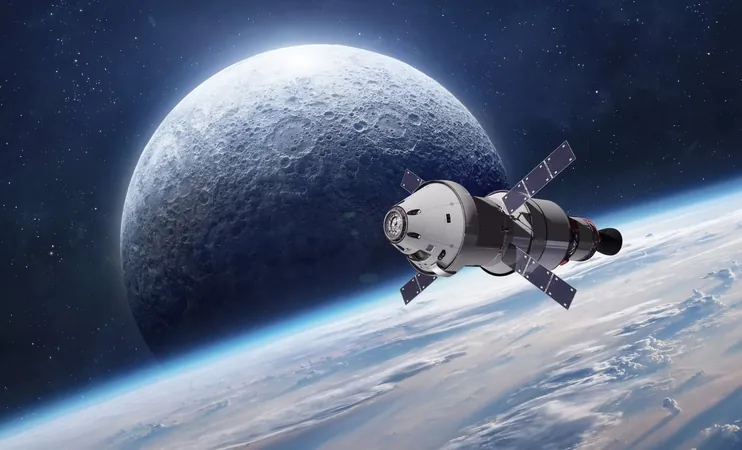
Your Name Could Go to the Moon! Join NASA's Artemis II Mission for Free
2025-09-16
Author: Jacob
Get ready for a historic journey! NASA's Artemis II mission, set to launch by April 2026, will be the first crewed lunar expedition in more than 50 years. This monumental mission is a significant leap towards NASA's ultimate dream of sending humans back to the Moon and eventually Mars.
What is Artemis II?
While Artemis II won’t land on the Moon, it will have four astronauts aboard as they soar in a looping trajectory around it. Marking the first human flight so far from Earth since Apollo 17 in 1972, this 10-day mission will test groundbreaking systems that are vital for future explorations into deep space.
Meet the Crew of Artemis II!
Launching from Kennedy Space Center in Florida, Artemis II will embark on a round trip of 230,000 miles. The stellar crew includes NASA astronauts Victor Glover, Reid Wiseman, Christina Hammock Koch, and Jeremy Hansen from the Canadian Space Agency, all selected in 2023 for this historic endeavor.
The mission path will be extraordinary—a figure-eight trajectory that arcs 4,600 miles beyond the Moon’s far side before heading back to Earth. During this groundbreaking journey, the crew will conduct crucial checks of life-support systems, and assess human communication and radiation exposure in the vastness of space.
A Call to Space Enthusiasts!
To ignite global curiosity and participation, NASA launched the exciting 'Send Your Name with Artemis II' campaign. Here’s your chance to submit your name, which will be etched on an SD card inside the Orion capsule. Each participant will receive a virtual boarding pass—a unique keepsake marking their connection to this cosmic adventure.
Lori Glaze, acting associate administrator at NASA’s Exploration Systems Development Mission Directorate, emphasizes how this initiative inspires people worldwide, making everyone feel part of humanity's journey into deeper space.
Why Artemis II Matters?
Beyond engaging the public, Artemis II is crucial for technical advancements. This mission will serve as a comprehensive test of all integrated systems under genuine spaceflight conditions. The performance of Orion’s crew module, environmental controls, navigation, and communications will be meticulously evaluated.
Astronauts will monitor the spacecraft’s radiation protection, communication delays, and the durability of life-support systems, all critical factors for future lunar landings and extended missions.
A Groundbreaking Launch!
This mission will also utilize NASA's most powerful rocket to date, the Space Launch System (SLS), for crew deployment. The success of this launch is pivotal in determining whether NASA is ready for Artemis III, which aims to return humans to the Moon's surface.









 Brasil (PT)
Brasil (PT)
 Canada (EN)
Canada (EN)
 Chile (ES)
Chile (ES)
 Česko (CS)
Česko (CS)
 대한민국 (KO)
대한민국 (KO)
 España (ES)
España (ES)
 France (FR)
France (FR)
 Hong Kong (EN)
Hong Kong (EN)
 Italia (IT)
Italia (IT)
 日本 (JA)
日本 (JA)
 Magyarország (HU)
Magyarország (HU)
 Norge (NO)
Norge (NO)
 Polska (PL)
Polska (PL)
 Schweiz (DE)
Schweiz (DE)
 Singapore (EN)
Singapore (EN)
 Sverige (SV)
Sverige (SV)
 Suomi (FI)
Suomi (FI)
 Türkiye (TR)
Türkiye (TR)
 الإمارات العربية المتحدة (AR)
الإمارات العربية المتحدة (AR)